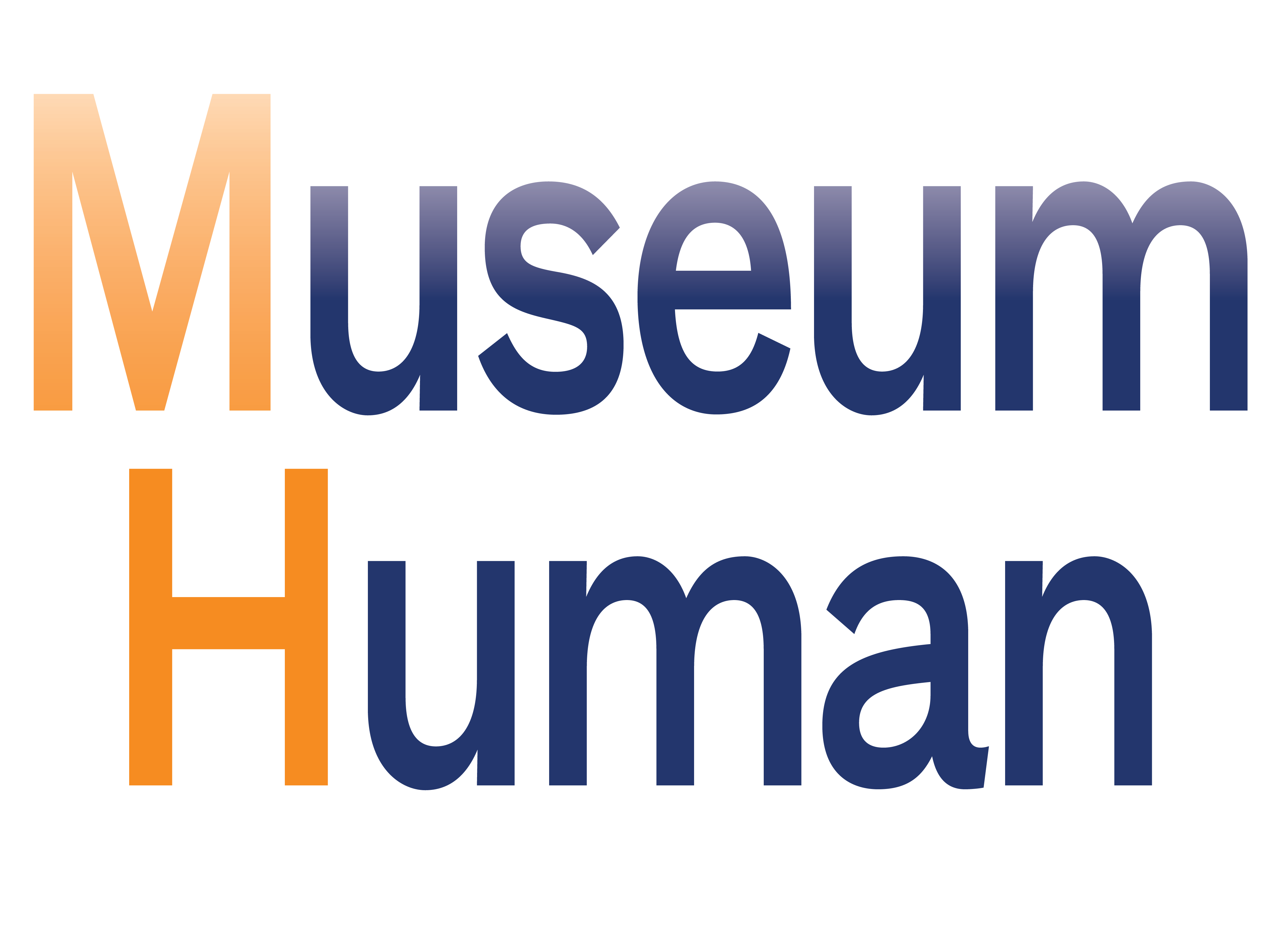
Museum Human considers paid-tier and discoverability dilemmas, among others.
Going into 2023, my main changes were moving from the former-bird-app to Mastodon, considering changing the name of the blog to something more collapse-acknowledging like Museum at the End of the World, and still thinking over a community like Discord, though accepting that it was probably too much work for an oft-tired introvert like myself.
I looked over earlier end-of-year posts and the problems are usually the same. I'll run through the questions I'm facing and the solutions I'm considering as of right now. As we all know, my yearly plans often don't come to fruition; as much as that seems like a bug, it's also a feature of mine.
To tier or not to tier
The annual problem of "paid and/or free" is the business decision that many a side hustle agonize over. I've seen more online writers decide—or have decided for them—that their site will become their main source of income, and platforms such as newsletter-focused Substack (and its ilk) and site-focused Ghost (where Museum Human resides) have it easier than ever before to give this a whirl (but not guaranteeing any particular success at generating income).
Honestly, staying all-free for Museum Human has mostly been about not getting bogged down in business affairs or value-for-money considerations. I know there's a principle of "if you're creating something of value, you should be charging for it," but to date I've been more or less fine with all Museum Human posts being free; the fact that subscribing is necessary allowed me to build a mailing list and a sense of a reader base. (Here's long-admired Jessica Wildfire on her OK Doomer site about doing what others—customers and bosses—value. She's increasing the site's emphasis on paid subscriptions going into 2024.)
The fact is, the recurring charges for Ghost—more expensive now that I'm above 1,000 subscribers—along with the Museum Human domain, dedicated email, interview tools Google One and Descript, and a post office box do add up. Going paid would probably pay for those expenses, but I do have to consider the added time (and expense) of managing a business, even one that's a side hustle.
To get back to the question of value, I do take it seriously. I want Museum Human to be useful to you readers, but as a free site, I can "afford" to be a little less choosy about my topics and voice, going with what I think is newsworthy and comment-worthy, even something that suddenly catches my attention. I can be more organic about how features such as interviews evolve. And, most of all, I have a little more flexibility about my time—true, I did manage to post every week of 2023, but I don't have to swear I'll do that every year. (Other paid sites aren't always so regular, which is okay, too.)
This all goes to say that maybe I'll start charging for full access to Museum Human, or maybe I won't. If I do, this is what I currently have in mind, perhaps starting July 1, halfway through the year:
Free tier: The basic plan would include getting Links of the Week as well as one longer post a month or so, whether accessed by newsletter or on the site, but no access to other articles like interviews.
Paid tier: The paid plan includes the free tier (Links of the Week and the regular longer post) plus a monthly interview post, monthly guest posts (I'm hoping to get other writers to post on the site), and any special posts, like a series I have in mind called Museum of the Future—with snapshots of what our institutions might be like in five, 10, 20, 50, 100 years, and even further out. It's a chance to really go futurist—and these would be works of fiction, so get your creative energy ready—and sci-fi with museums, organizations, and society.
Like many sites, I'll offer monthly and (discounted) annual plans, and current subscribers would get an opportunity beforehand for a discounted or a locked-in price. While I don't yet know what the cost of the paid plan would be, it would be comparable to those charged by other museum-field (and doomer-adjacent) sites I frequent and support.
What do you think, readers? Reply to this email, add a comment below, or use the Google contact form to let me know. Would you pay to subscribe or not? What would you pay for? There'll be more mention of this well in advance of July, so you'll have plenty of time to consider it.
There are other issues besides cost that I'm wrestling with as 2024 approaches.
How to get discovered
A major issue with all content websites is discoverability, as the fall of social media has made it much harder to publicize my work and grow my audience without moving over to Medium and Substack, which both have recommendation engines, as well as problems. I know multiple writers who have left both platforms (including one who's moved to Ghost, others who've gone to Buttondown for newsletters only) over whom the siterunners favor or refuse to kick off, and others who have stayed on the latter due to fear of having no way to get seen by non-subscribers.
Here's the eminently successful writer Anne Helen Petersen on her Culture Study Substack, with her decision about whether to leave the platform over its refusal to kick off and/or de-monetize Nazis:
Like many other writers on this platform, I have spent many, many hours trying to figure out what to do about this scenario. I do not use Substack as my publishing platform because I believe in their ethics; I use it because it is the best way to connect with current readers and connect with new ones. If you want to make a living on a subscription model of any kind, whether here or at The New York Times, both components are essential: you have to make it easy for your current readers to read you….but you also have to make it easy for others to discover you. Without it, the natural churn of the subscription model would eventually make the work unsustainable.
The “discovery” component facilitated by Substack is especially crucial in this current moment, when social media — previously the primary means for new readers to discover work — has imploded. In short: Substack allows readers to find more things to read. It has made it easier for you to subscribe (paid or not!) to other Substacks and it has made it easier for readers of other Substacks to subscribe to Culture Study (paid or not). Pretty straightforward network effects. …
An independent writer like myself — and like the other writers you read and admire here on Substack — finds themselves with very few options. They can flee this platform, as we have fled Twitter, as we have fled mainstream news organizations that have opted for “both side-ism” on any number of issues including but by no means limited to fascism, as we have fled Facebook. The Nazis will follow. It has become more and more clear to me: This is no way to fight.
There's no good answer for that or the discoverability dilemma. My largest bumps in sign-ups this year have been interviews or when readers amplified my post on LinkedIn. I usually get a couple of signups a week through that site; Mastodon and Bluesky have been nonfactors in newsletter signups for me.
Since I don't do ZuckBook or ZuckaGram, I don't have many good options for discovery if I don't take my chances on Substack or Medium. I would have to hustle in museum spaces to get more attention, and the best ways to do that are in person at conferences, but I've been clear that I don't favor indoor gatherings.
Subscriber numbers have increased steadily but at a slowing rate over the course of 2023. Website analytics are also a bit fraught; pageviews are way up from 2022 to 2023, but at least some of that seems to be from analytics anamolies; user numbers are also up, but I'd need to study the new Google Analytics version 4 platform to really be able to parse them all.
At any rate, these numbers can provide some information but hardly tell an engagement story; I'd gladly trade a thousand pageview events in GA4 for a reader comment, all of which are really important to me. Hearing more from subscribers would represent a big step forward in connecting with readers and demonstrating value. That's obviously where a Discord community or Substack thread would help, but what if you throw a server and no one shows up? (And that includes me!)
In the end, discovery and discoverability will continue to be a concern. I'll stick with mentioning new posts on LinkedIn but might skip Mastodon and Bluesky and just use those as typical social media, which is probably a better use for those platforms than just posting about my MH writing. I'll also see if I can be more of a part of museum-world conversations on all the platforms I use, as well as other online museum spaces, in the coming year. Finally, featuring more interviews and even guest posts should help, as museum folks often bring their audiences to our chats.
Usability and tech
I'm considering hiring an expert to help with updating the Museum Human website, which may also improve some of the newsletter and membership features of the site as they're all folded into Ghost.
While I like my current site theme, Museum Human has had the same look for several years. If I want to change the theme or more than the simplest aspects of its appearance, I need the help of the theme's developers; the same goes for using all the features of the platform, as sometimes they don't work with the theme that the developers have customized.
I've long planned to up my CSS and web development skills to be able to manage more work on the site myself, but those lessons, whether on Mozilla or LinkedIn Learning, always fall just below my time-to-do-this threshold. There are Ghost experts out there for hire, but I want to make sure I'm really clear on just what I want them to do and improve before I employ their services. It's expensive but not probitively so to hire one of those folks.
Naturally, I go into each new year planning on scheduling learning time each week; we'll see how that goes!
Topics for 2024
Finally, I'd like to mention some of the issues I think, as of now, that you'll be reading about in the coming year, apart from obviously timely AI, remote/hybrid work, collapse, and dealing with partisanship as a possibly epochal election approaches in the US.
Something new that I'd like to write about has been brought up by Mike Murawski of Agents of Change, with whom I have a chat that will be appearing on the site in the first couple of months of 2024. Murawski has floated a new movement to get people—and organizations—to Slow the F*ck down (also here and here). I've gone on and on recently about activity levels, overstuffed schedules, and time scarcity, so it's great to see someone else taking on this topic head-on.
I went off last week about the return-to-normal mindset in the face of the very-much-here pandemic; don't expect me to let that go this year. I think it's important that we confront our ongoing grief about what we have lost, and those of us who remember better and simpler times need to let go of the idea that we can wish away stress and trauma for younger people, even our children.
What would "imperfectionism" and "moving on" mean for museums? And how does this acceptance play into confronting our damaged world?
The pace for 2024
As I've said more than a few times, last Friday's Links of the Weeks topped off 2023 as the year that I finally posted every week—in this case twice a week, plus one additional post. I'm not going to lie: publishing 105 posts was exhausting, and I regularly failed in my goal to stay several weeks ahead of my publication dates.
I wasn't writing posts from scratch the morning they went live, but I was, all too often, starting them the weekend before, something I was trying to avoid (to keep my weekends free to read, listen, and watch in order to gain ideas for later posts).
So, on the one hand, I wouldn't mind slowing the f*** down, if I thought that this would keep me from starting posts the weekend before. Knowing myself, I don't think simply writing fewer posts is the solution to a more sustainable pace.
Instead, I'm going to try to use format to space out my writing. How's this for a monthly cadence?
Week 1: a post based on a book (or other content) review and a Links of the Week
Week 2: an interview and a Links of the Week (interested in being interviewed for Museum Human? let me know!)
Week 3: a longer post and a Links of the Week
Week 4: a guest post and a Links of the Week (interested in contributing to Museum Human? let me know!)
Plus: special posts spaced throughout the year called "Museum of the Future"—fictional accounts of what museums might look like in 2030, 2040, 2050, 2075, 2100, 2150, 2200, and even 3000
Sure, that's still a pretty heavy workload, but I'm hoping the structure, and the fact that interviews and guest posts unfold after many weeks of work, might help. And I plan to curtail my tendency to let book reviews turn into multi-week sprawls.
Of course, the challenge here will be fitting this cadence into my usual messy weeks—people who know me, or who've been reading Museum Human for a while, probably have heard that my job has evolved over many years into an amalgamation of several different and sometimes unrelated roles; some of my work is defined by regular interruptions that can be timely if not necessarily urgent. I'm easily distracted, so by the time I've seen the email in my inbox the battle is already lost.
So if 2023's goal was to post every week, then 2024 might be to post sustainably and to respect my time. The latter is a practice I'll be working on all year.
With that, I'll let you get back to your likely crazed first-week-back. Friday's Links of the Week will finish up with leftover articles from 2023, but next week we'll get our new cadence off and running with a review of Brian Merchant's new book about the Luddite rebellion of the early 1810s and its connection to tech-driven gig work today, Blood in the Machine. (Since I just came up with this cadence, you probably won't see interviews and guest posts until February; we'll see what we can do to keep things sustainable this month.)
Thanks for reading my year-end and year-starting posts, and happy new year!
cover image by Kajetan Sumila / Unsplash [description: two folders, reading 2023 and 2024, respectively, on a computer desktop, with the cursor highlighting the 2024 folder]
What Might Be in Store for Museum Human in 2024 © 2024 by Robert J Weisberg is licensed under CC BY-NC-ND 4.0







